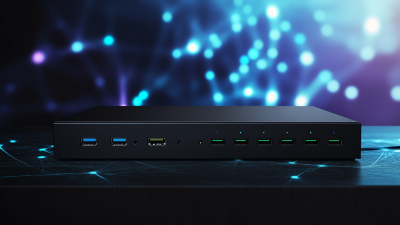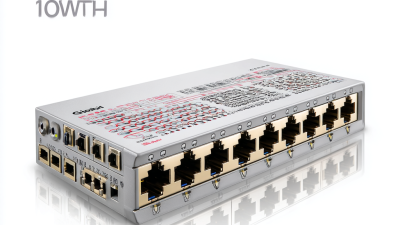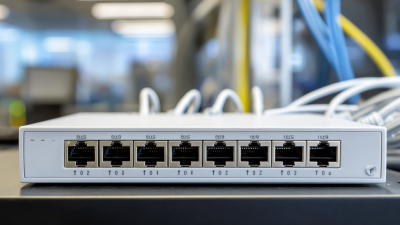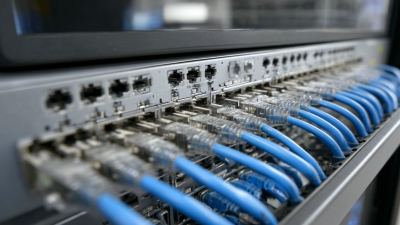
- hasivo@hasivo.com
- Mon - Sat at 7:00AM to 9:00PM
Leave Your Message

In the rapidly evolving landscape of networking technology, Gigabit Switches represent a crucial component for achieving peak performance in data transfer and connectivity. According to a recent report by Global Industry Analysts, the Gigabit Switch market is projected to reach a staggering $15 billion by 2026, reflecting a compound annual growth rate (CAGR) of about 12%. This growth is driven by the increasing demand for high-speed internet access and the proliferation of smart devices in both residential and business environments.

As networking expert Johnathan Reyes aptly stated, "The efficiency of a network hinges on the quality of its switches, and Gigabit Switches are indispensable for handling the data traffic of today and tomorrow." With advancements in network technology, the evolution of Gigabit Switches not only enhances bandwidth utilization but also improves network reliability and scalability. This comprehensive analysis of the top 10 Gigabit Switches for 2025 will explore their features, benefits, and how they can elevate your network performance to meet the demands of an increasingly connected world.
In 2025, the demand for high-performance networks continues to surge, making gigabit switches essential for seamless connectivity. Understanding the key features and specifications of these devices is crucial for optimizing network performance. Gigabit switches typically support data transfer rates of up to 1 Gbps per port, allowing for rapid data exchange across various devices. According to a report by the International Data Corporation (IDC), the global market for gigabit switches is expected to grow by 15% annually, indicating a shift towards advanced networking solutions in both enterprise and residential sectors.

When evaluating gigabit switches, key factors to consider include port density, management capabilities, and power over Ethernet (PoE) support. Many switches now come with 24 to 48 ports, providing ample connectivity for larger networks. Furthermore, Layer 2 and Layer 3 management features enhance control over traffic and improve data routing efficiency. Additionally, a study by Deloitte highlights that PoE-enabled switches are predicted to dominate the market, driven by the rising trend of powering devices like IP cameras and Wi-Fi access points directly through the network cable, thus streamlining installation and reducing clutter. Together, these specifications contribute significantly to the ultimate network performance businesses seek in the fast-evolving digital landscape.
When evaluating gigabit switches for optimal network performance, it is essential to focus on key performance metrics such as throughput, latency, and packet loss. According to a report from the International Data Corporation (IDC), the throughput of a gigabit switch significantly influences network efficiency, with the best models achieving over 95% utilization rates. This peak performance allows for seamless data transmission, enabling businesses to manage larger volumes of traffic without bottlenecks.
Latency, another critical factor, defines the time it takes for packets to travel between devices. A recent study from D-Link indicated that top-performing gigabit switches maintain latency as low as 1 millisecond under standard loads, providing a responsive network experience crucial for applications requiring real-time data transfer, such as VoIP and online gaming. Furthermore, packet loss rates in high-quality switches are reported to be below 0.01%, ensuring that critical data packets are reliably transmitted, reducing the chances of network congestion and enhancing overall performance.
In the rapidly evolving landscape of networking technology, selecting the right gigabit switch can significantly impact overall network performance. The comparative analysis of top brands unveils a range of features and capabilities that cater to different business needs. When examining high-performance gigabit switches, leading brands provide varying degrees of scalability, security, and manageability. Some models offer sophisticated network management tools, while others focus on delivering high port density and energy efficiency.
For businesses prioritizing reliability and advanced features, choosing between prominent manufacturers becomes a critical decision. Features such as Quality of Service (QoS), VLAN support, and PoE functionality play significant roles in determining the best fit for specific applications. In this competitive market, understanding how these brands differ in performance, cost, and customer support is essential for making an informed decision that meets both current and future networking demands.
As the demand for high-speed networking continues to escalate, switches equipped with PoE++ and 10 Gigabit uplink capabilities are becoming increasingly essential for businesses and home users alike. The introduction of advanced switches, such as those from various manufacturers, reflects a trend toward multi-gigabit performance and enhanced power delivery for IoT devices. These products not only ensure fast data transmission but also supply power efficiently, streamlining installations and reducing the need for additional power adapters.
Tips: When selecting a switch, consider the number of ports you need and whether PoE++ is essential for your devices. It can significantly cut down on cable clutter and simplify your network setup. Additionally, pay attention to the uplink capabilities; a 10 Gigabit uplink can dramatically improve your network's performance, particularly in high-demand environments.
Emerging technologies like cloud-managed switch systems are making it easier to monitor and control network traffic, providing businesses with the tools to optimize performance and manage devices remotely. As we move into 2025, staying ahead of these advancements will be crucial for maintaining a competitive edge in networking solutions.
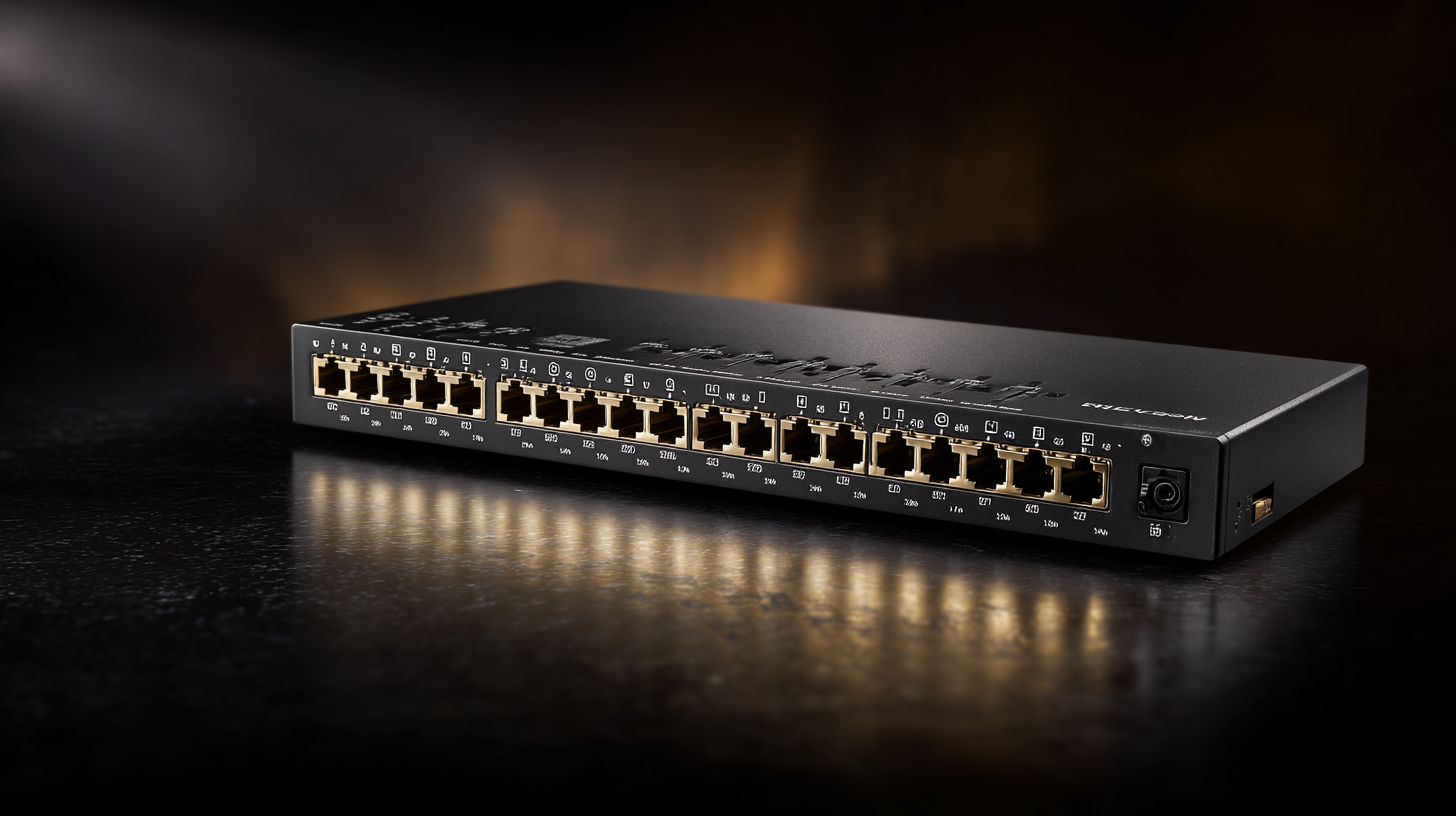
As organizations continue to prioritize high-speed connectivity, investing in gigabit switches has become increasingly crucial for maintaining optimal network performance. A recent report from IDC indicates that the demand for high-performance networking solutions is projected to grow at a compound annual growth rate (CAGR) of 12.5% through 2026. This surge is driven by the rise in data-intensive applications and the growing adoption of cloud services, underscoring the necessity for businesses to evaluate the cost-benefit ratio of their investment in gigabit switches.
When assessing the return on investment (ROI) for high-performance gigabit switches, enterprises should consider both direct and indirect benefits. According to research by Gartner, organizations implementing gigabit switches can see performance improvements of up to 85% in their network operations, leading to enhanced productivity and reduced downtime. Moreover, the initial expenditure can often be offset by savings in network maintenance and the avoidance of costly upgrades in the near future. By strategically investing in top-tier gigabit switches, businesses not only elevate their operational efficiency but also position themselves competitively in an increasingly digital landscape.
